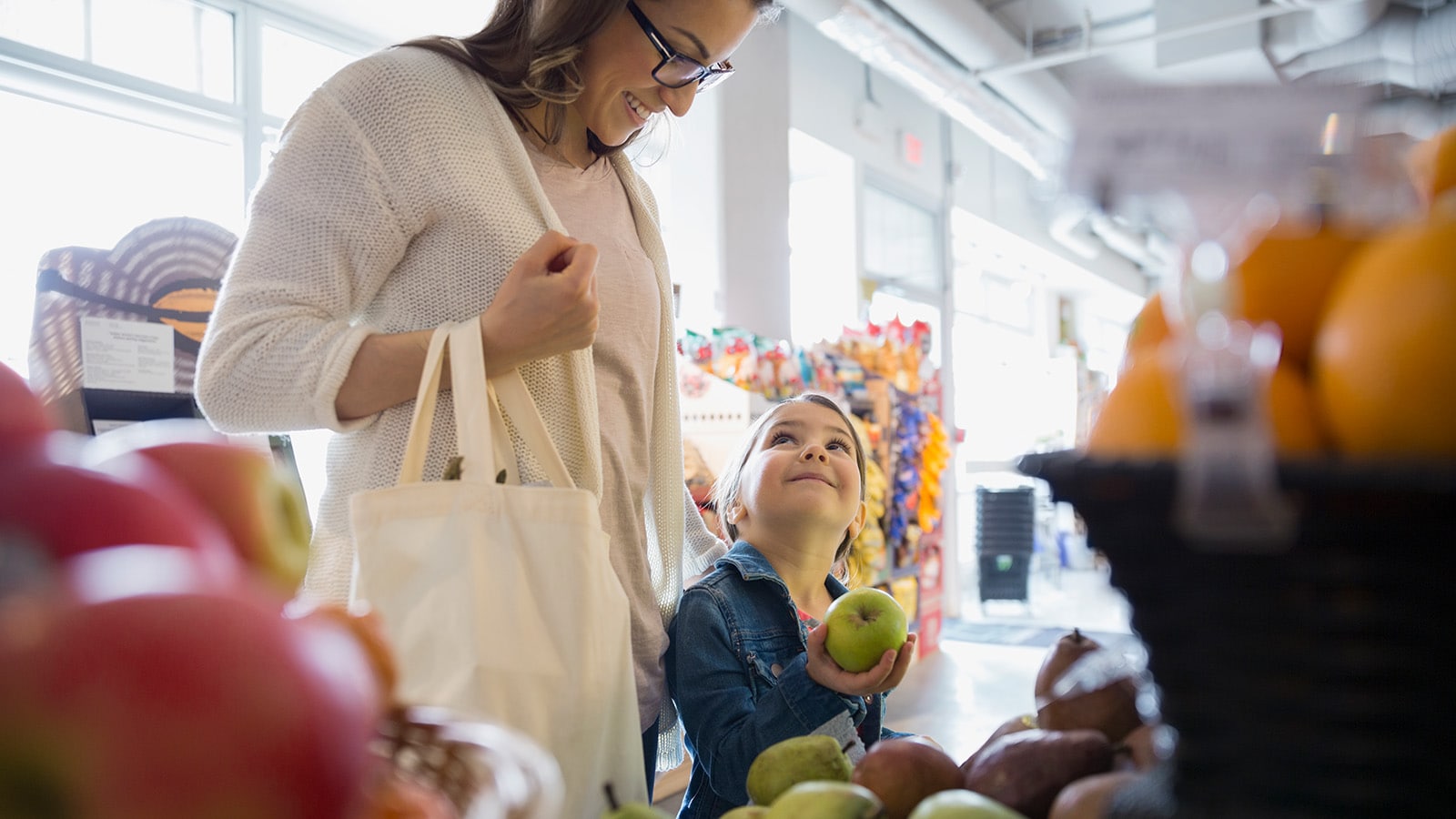
Go beyond consumers’ new needs. Shape our food future.
Voice of the Consumer 2025 – Canadian insights
At a glance
- Canadian consumers are more concerned about food prices than their global counterparts, pressuring companies to find efficiencies and reduce waste.
- Food companies face new demands from Gen Z consumers, who are pushing for healthier choices and insisting on fast, affordable online service.
- Bold collaboration between retailers and food processors can scale domestic supply chains and address consumers’ growing demand for Canadian products.
Canadian consumers face a new food anxiety. They’re grappling with rising prices and are increasingly aware of how their food choices affect the economy, the environment and their health.
Our latest Voice of the Consumer survey of shoppers reveals that food prices are affecting Canadians’ shopping habits and brand loyalty. This comes as other forces reshape the food and grocery sector. Geopolitical tensions are steering consumers toward Canadian food products as shoppers simultaneously pursue healthier and more sustainable options.
Food bill concerns weigh more heavily on Canadians’ minds
Question: How concerned, if at all, are you about the following? (Chart shows percentage of respondents who say they’re “extremely” or “very” concerned.)
Unlike in other countries, price overshadows all other food concerns in Canada. This creates an imperative for Canadian retailers and consumer packaged goods (CPG) companies to build more efficient food supply chains from farm to table. It’s time to redesign how we grow, process, transport, sell and consume food—cutting waste and costs at each step.
This demands innovative cooperation and strategic partnerships across the entire agri-food ecosystem, from farmers and agricultural firms to wholesalers, technology companies, producers and retailers. Together, we can reimagine how we feed ourselves. Transforming our agri-food supply chains can create a more affordable food system—one that also lets consumers choose healthier, more sustainable and locally sourced food.
To better understand these trends, we surveyed more than 21,000 consumers from 28 countries, including 1,020 in Canada, earlier this year about their shifting food choices.
Buy Canadian: Balancing values and value
Changes to the Canada-US trade and political landscape heightened Canadian consumers’ preference for locally sourced products. Nearly half (46%) now cite domestic sourcing as their top sustainability consideration in food purchases, exceeding the global average (40%). This preference stems from a desire to contribute to the local economy (55% versus 47% globally), followed by beliefs that locally produced food is healthier (49% versus 45% globally) and of higher quality (44% versus 40% globally).
Grocers are responding by stocking more Canadian-sourced products. But a significant challenge remains: the perceived price premium on domestically sourced goods. “Made in Canada” labels may capture consumers’ initial interest, but our analysis suggests that, for many shoppers, purchasing decisions still hinge on price.

20%
On one hand, 75% of Canadian consumers tell us they’d pay a premium for locally produced food products—a figure that, by some estimates, increased as US trade and tariff tensions intensified. Yet when asked to make a direct choice, a majority (62% of Canadians, compared to 56% globally) say they’d select a lower-priced imported product over a more expensive domestic equivalent. This discrepancy reveals the gap between aspiration and reality: consumers value local sourcing, but their willingness to pay more is often undermined by budget concerns.
Of course, not all Canadian products carry a premium. Some are competitively priced or less expensive than imports. And where Canadian products do cost more, shifting tariffs may narrow the price gap between some domestic and imported goods.
Beyond pricing considerations, a broader transformation is taking place. Canadian retailers are increasingly supporting local suppliers as they see the growth opportunities created by consumers’ demand for domestic products. This is a unique chance for smaller food processors to scale their operations and reduce costs—thereby addressing the factors that consumers tell us prevent them from purchasing more Canadian products (see chart).
Price perceptions hurt domestic food brands—but greater visibility could help
Question: What are the main reasons, if any, for not choosing locally produced food? (Asked of respondents who said they don’t buy locally produced food).
Canadian retailers and CPG companies can overcome these barriers by moving beyond transactional retailer-supplier relationships and forging deeper partnerships across the grocery sector. This can include long-term offtake agreements that offer certainty and facilitate expansion investments, alongside sharing expertise, providing capital and even pursuing vertical integration opportunities.
These collaborations create a powerful growth engine for local brands. Increased shelf space for Canadian products boosts brand awareness and stimulates demand, making it even more advantageous to stock local products. This growing presence opens opportunities for CPG companies to amplify their brand through strategic marketing initiatives—from social media, influencer and chef partnerships to in-store promotions. Both retailers and CPG companies gain: Canadian suppliers scale and thrive, while grocers satisfy consumer demand for Canadian products and benefit from more resilient domestic supply chains.
Understand consumers’ changing priorities
Learn how to capture value in the new agri-food system
Reduce waste and create a more transparent food system
Feeding a growing population requires reducing both resource use and environmental impact. Consumers want to contribute to the solution. Among those worried about climate change (77% of Canadians, compared to 82% globally), a significant majority—96% (97% globally)—are adjusting their food choices to lessen their impact. This includes actionable measures such as reducing personal food waste (56% in Canada versus 58% globally).
The desire to decrease food waste is increasing consumers’ interest in certain products. This includes buying more frozen foods and products with a longer shelf life (49% versus 42% globally). Additionally, we see interest in purchasing imperfect products like misshapen vegetables and dented cans (40% versus 30% globally) and use of food refill stations and shops (25% versus 32%). These figures highlight growth potential through improved access and increased consumer education about the benefits of these options.
How consumers want to tackle food waste
Question: If you had to take three actions to help reduce the overall impact of food waste on the environment, which, if any, of the following would you be most likely to do?
But the opportunity to truly address food waste extends beyond changing consumer behaviour. All players in the food ecosystem must innovate and collaborate on new production methods, technologies and business models to create greater transparency throughout the value chain. Imagine: retailers sharing demand signals with farmers, who use artificial intelligence to plant only what’s needed and avoid overproduction. Once the crops are harvested, sensors monitor goods in storage and throughout the transportation process, flagging changes in temperature or humidity that could result in spoilage. And, once on store shelves, artificial intelligence helps retailers predict when food is nearing its expiration date and recommends promotions for quick sales.
These technological solutions can reduce waste and costs for businesses while increasing product quality. This enhanced transparency builds trust with environmentally conscious consumers, many of whom are ready to pay a premium for greater insight into a product’s origins. Nearly two-thirds (63%) of consumers say they’d pay an above-average price for such transparency, with one in five willing to pay a 10% premium or more.

58%
Consumers are eager for deeper insights into the food they buy. Currently, 58% of Canadian consumers (69% globally) look for sustainability information from brands, primarily through social media (45% in Canada versus 62% globally) and traditional media (44% versus 50% globally). That’s followed by product packaging and labelling (39% in Canada versus 40% globally)—a source of information that we expect to become even more popular as companies adopt 2D barcodes that can encode far more data than linear barcodes.
Under the GS1 Sunrise 2027 initiative, retailers will equip all points of sale with 2D barcode scanning capabilities by the end of 2027.2 2D barcodes can provide access to a wealth of online information, from expiry dates and sourcing details to ingredient lists, allergen information, product images, consumer reviews and recycling instructions.3 Companies can act now to meet these rising transparency demands by crafting compelling narratives that clearly communicate sourcing details, ingredients and consumer benefits—helping to differentiate themselves based on quality and trust.
Building consumer trust in what matters
The future of food and groceries in Canada depends on a fundamental shift from a linear value chain to an interconnected ecosystem. Success requires astute understanding and proactive adaptation to evolving consumer demands for affordable, locally sourced, healthy and sustainable food.
This means embracing collaboration across the entire food system and using technology to unlock efficiencies, enhance transparency and build trust. Companies that embrace this interconnected approach can thrive in the evolving Canadian food landscape—ready to deliver on consumer expectations, foster loyalty and create lasting value.
How will you go beyond consumers’ new needs?
Learn how the right resources, technology and insights can help you move forward with clarity
1 “Think Eat Save: Tracking Progress to Halve Global Food Waste,” United Nations Environment Programme, March 27, 2024, https://wedocs.unep.org/handle/20.500.11822/45230.
2 “Get Ready for GS1 Sunrise 2027,” GS1 US, accessed May 14, 2025, https://www.gs1us.org/industries-and-insights/by-topic/sunrise-2027.
3 “2D Barcodes at Retail Point-of-Sale Implementation Guideline”, GS1, May 28, 2024, https://ref.gs1.org/guidelines/2d-in-retail.
Contact us


Canadian strategic operations lead for Markets and Clients, Partner, PwC Canada
Tel: +1 514 205 5000


















